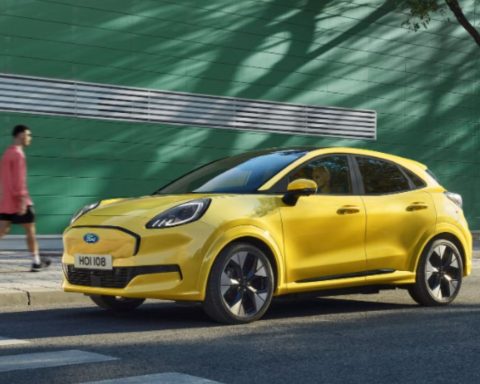September marks a return to the classroom, and kids across the country are boarding iconic yellow school buses every morning and afternoon from now until springtime. Nearly all those buses run on diesel fuel, a potent source of emissions that are responsible for a broad range of adverse health impacts and a disproportionate amount of Canada’s greenhouse gases (GHGs).
After a summer of raging wildfires linked to climate change, and in a province that is the automotive hub of the country, Ontario can and should do much more to accelerate the electrification of heavy buses and trucks. And investing in the electrification of school buses is a good place to start, especially when you consider that transportation is the single biggest source of GHGs in Ontario and that the province has a clean electricity system (estimated to be 92% emissions free) to charge battery-run vehicles.
Not all heavy-duty trucks and buses can be easily transitioned to zero-emission vehicles. Long-haul trucks – given their size and weight, the long distances travelled between charges or refuelling, and technology that is not yet market-ready – will take longer to decarbonize.
This is not the case for buses. In fact, of all the classes and sub-classes of large vehicles, school buses are one of the easiest to electrify. Typically, school buses have a predictable daily mileage of around 63 miles (100 kilometres) and return to the same base regularly, making them ideal for overnight charging at a central depot. Because electric school buses don’t typically use public chargers, relatively low-cost Level 2 chargers can be installed by private fleet owners.
Yet, to date, just 20 school buses are electric in this province.
Some might argue that sticker shock is the reason for the tepid interest in electric school buses:; they’re more than double the purchase price of a conventional bus. But this claim fails to account for the cost savings associated with a zero-emission bus. Over a 12-year lifetime, electric school buses save approximately $14,000 a year by using electricity in place of diesel fuel and realize additional savings of about $3,000 annually on maintenance costs. Adding in the $150,000 rebate offered by the federal government, the total cost of ownership of an electric school bus can reach parity with diesel in just under six years.
Moreover, investing in electric buses could help revitalize Ontario’s medium- and heavy-duty vehicle sector that has yet to fully recover from near collapse in the wake of the 2008 financial crisis. The North American electric bus market has become increasingly buoyant and is predicted to nearly double within the next two to three years. Meanwhile, the global market has gone into overdrive: sales projections for electric buses are expected to reach US$3.1 billion by 2030.
Ontario can leverage its automotive infrastructure and labour force to take full advantage of current market conditions. As it has done in the passenger car sector, the province should consider comparable investments in manufacturing zero-emission heavy vehicles, including school buses, while also incentivizing domestic uptake. Purchase incentives, such as rebates, have been shown to be more effective at growing local markets than subsidies for manufacturers.
If the province doesn’t shift gears soon, the economic fallout of this missed opportunity will be bracing. The Pembina Institute recently released a report on electric school buses in Ontario in which our modelling shows that if 65% of Ontario’s school bus stock is electrified by 2030 (Quebec’s target for school bus electrification), multiplier effects along the supply chain would result in more than 13,000 jobs and generate nearly $2 billion in economic output for the province.
Cost savings can also be realized in the health system. According to Health Canada, health costs related to diesel exhaust are estimated to be about $2.3 billion annually.
Not every argument need be reduced to dollars and cents. In Canada, the transportation sector spews more carbon pollution into the air than any other sector save oil and gas. Those two sectors combined are responsible for approximately half of Canada’s total emissions. While emissions from passenger cars have been edging downward, emissions from medium- and heavy-duty vehicles have been tracking upward – countering Canada’s efforts to lower GHGs by 40% in the next seven years.
Some 20,000 school buses transport children in Ontario on a daily basis. Of those, only a couple hundred electric versions are expected to be on the road in the next three years. Ontario’s sluggish pace compares unfavourably with other provinces such as Quebec, where Transport Minister François Bonnardel has declared that nearly 2,600 electric school buses will hit the road over the next three years.
The provincial government is in the driver’s seat. Ontario can take the road that leads to a clean environment, healthy communities and economic prosperity. Turning the yellow school bus into a clean, green one can be the first stop along the way.
Chandan Bhardwaj is a senior transportation analyst with the Pembina Institute.







